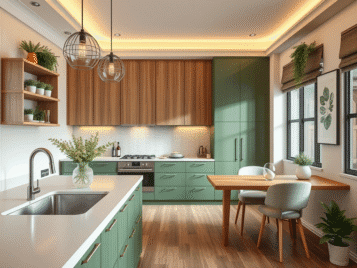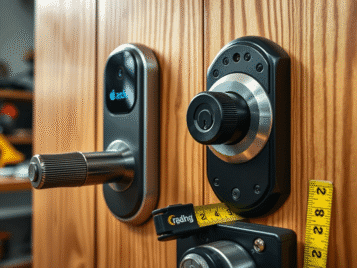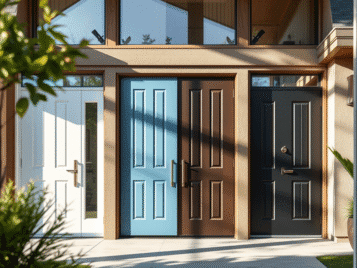A façade is only as durable as its weakest joint. Water intrudes, wind rattles panels, and thermal cycles test every millimetre of movement space. Whether you specify aluminium composite panels (ACP) or SamratHPL exterior‑grade compact laminates, the science of joints remains the same: control movement, keep water out, let vapour escape, and guard against fire spread. This guide distils best practice from international standards (EN 13501‑1, ASTM E330, IS 16246) and on‑site lessons from projects in humid Mumbai, windy Rotterdam, and sun‑blasted Seville.
1. Understand the Movement You’re Fighting
| Cause | Typical magnitude | What it does to panels |
|---|---|---|
| Daily temperature swing | ± 2 mm per 3 m panel (dark colours, 40 °C delta) | Bowing, oil‑canning |
| Seasonal moisture | 1–2 mm swell in compact HPL core | Edge stress |
| Building drift (wind/seismic) | 1/500 of storey height | Shears fixings if joints too tight |
Rule of thumb: Allow at least 6 mm joint width between 3 m ACP cassettes, 8 mm between 3 m SamratHPL slabs—larger gaps for darker shades or continental climates with > 50 °C annual swing.
2. Open‑Joint vs Sealed‑Joint Philosophy
Open‑Joint Rainscreen (Ventilated)
- Gap left open; rear cavity ventilates, equalising pressure.
- Favoured in Europe for compact HPL.
- Advantage – No sealant to age; quicker drainage.
- Detail – Use UV‑stable black battens or tapes to mask cavity shadows.
Sealed Joint (Wet Seal)
- Filled with silicone or polyurethane sealant.
- Common on ACP retail façades seeking a sleek glass‑panel look.
- Risk – Sealant chalks in UV; plan a re‑seal cycle every 7–10 years.
- Tip – Use two‑part, non‑staining silicone with 25 % movement capability.
3. Joint Depth & Backing Rods
With sealed systems, depth matters as much as width. Aim for a sealant depth ≈ 0.5 × joint width (e.g., 8 mm wide → 4 mm deep). A closed‑cell polyethylene backing rod:
- Controls depth.
- Provides a bond‑breaker so sealant stretches, not tears.
- Blocks capillary water wicking behind panels.
4. Concealed Fixings & Joints
SamratHPL compact laminates allow routed under‑cuts for S‑clips or under‑cut anchors. This leaves the face free of rivets, but:
- Maintain 15 mm edge distance from clip centre to panel edge.
- Keep clip spacing ≤ 600 mm vertically to resist suction loads up to 2 kPa (coastal winds).
- Check that the S‑clip depth doesn’t conflict with back‑vent gap (minimum 20 mm clear airflow).
5. Fire‑Stop Strategy
Code trend globally: create horizontal fire barriers every second storey (≈ 6 m) and vertical barriers at compartment lines. For both ACP (mineral‑filled core) and compact HPL:
- Use mineral wool batts ≥ 120 kg/m³ density, faced with aluminium foil.
- Allow batts to compress 10 % to wedge against panel rear and slab edge.
- Seal gaps with intumescent mastic rated to the same fire class.
6. Common Joint Mistakes and Fixes
| Mistake | Symptom | Prevention |
|---|---|---|
| Skimped joint width | Pillowing, popped rivets in summer | Follow min. 6–8 mm spec; mock‑up first |
| Sealant slapped onto dusty aluminium | Sealant peel in six months | Solvent‑wipe and prime edges before gun‑grade |
| No drip edge on horizontal joints | Black water streaks on façade | Route 3 mm drip return or add aluminium flashing |
| Mixed metals in fixings | Galvanic corrosion white stains | Use stainless A4 screws with HPL, same‑metal rivets with ACP |
7. Cost Impact of Getting Joints Right (2025)
| Region | Re‑seal cycle cost (sealed ACP) | One‑time joint tape (open HPL) | Life‑cycle saving |
|---|---|---|---|
| India | ₹65–₹90 / m run every 8 yrs | ₹35 / m once | 35 % over 25 yrs |
| Germany | €7–€10 / m run | €4 / m | 30 % over 25 yrs |
| Spain | €6–€9 / m run | €4 / m | 25 % over 25 yrs |
Open joints with UV tapes on SamratHPL panels cost less long‑term, especially where labour is expensive.
8. Detail Checklist Before You Sign Off Drawings
- Joint width and depth called out on every elevation and section.
- Sub‑framing layout clearly dimensioned to panel joints—no ad‑hoc bracket shifts on site.
- Ventilation slots sized at ≥ 10 000 mm² per m² of façade area.
- Fire barriers dimensioned and specified with density, facing, and intumescent seal.
- Fixing schedule—clip/rivet type, pitch, material grade.
- Maintenance note—sealed systems: next inspection date; open systems: tape UV rating.
Final Word
A flawless façade isn’t magic; it’s mathematics and discipline at the joints. Respect material movement, ventilate cavities, block fire and water, and you’ll enjoy panels that look crisp for decades—whether they’re sleek aluminium cassettes or grain‑rich SamratHPL compact laminates. Get the joint right once, and the scaffold shouldn’t return until the building needs a new address on the door.



